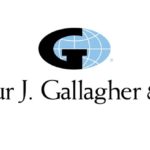Glencore Plc, the worlds largest producer and trader of raw materials, said on Wednesday that a steep drop in commodity prices pushed it to a loss in the first half, while profit from its trading arm that is supposed to offset such market routs also slid.
Glencore said that it swung to a net loss of $676 million in the six months ended June on the back of a 25% drop in revenue to $85.71 billion, defying analysts projections for a profit of about $730 million compared to a profit of $1.72 billion during the same period a year earlier. Earnings before interest, tax, depreciation and amortization (EBITDA) plunged 29% to $4.61 billion from $6.46 billion a year earlier.
The downbeat performance was driven by weaker commodity prices, particularly copper, coal and oil, which have fallen to multi-year lows. The company said that earnings before interest and tax at the industrial arm, which includes mines and farms, were $341 million, down 84% from a year earlier.
“The performance of our industrial assets largely reflects the impact of lower commodity prices, somewhat offset by cost improvements, currency benefits and selective production increases,” said Chief Executive Ivan Glasenberg. “We expect profitable portfolio production growth and further cost reductions / efficiencies, aided by the flow through lag-effect of weaker producer currencies and oil prices, to provide some positive momentum into second half performance.”
Meanwhile, EBIT at the marketing, or trading, division slid 29% to $1.07 billion and Glencore said it expects the arm to generate EBIT of between $2.5 billion and $2.6 billion this year, falling short of analysts minimum projection of $2.7 billion and the companys estimate of $2.7-$3.7 billion. This was explained with tough trading conditions in the aluminum, nickel and coal markets, while grain marketing was down due to a strong comparable base but is expected to post improved performance in the second half.
Mr. Glasenberg has said that Glencores dual nature of operations should protect its performance during times of market turbulence, which was one of the reasons for the merger with mining giant Xstrata in 2013, prior to which Glencore was principally a trading company.
However, despite the tough market conditions, Glencore kept its interim dividend unchanged from a year earlier at $0.06 per share and also managed to lower its debt, which was welcomed by investors. The company said that net debt fell by $982 million to $29.55 billion due to a 21% reduction in net capital expenditure and a $3.2-billion release of working capital, and expects to further reduce it to $27 billion by the end of 2016. Gross debt fell to $50.48 billion from $52.69 billion at the end of 2014.
Glencore also lowered its capital expenditure budget to $6 billion this year, compared to the previous guidance of $6.8 billion, and set a spending ceiling for next year of $5 billion “under current market conditions”.
“Our core industrial assets remain well positioned on their respective cost curves,” said Mr. Glasenberg. “We remain by far the most diversified commodity producer and marketer and are well positioned to benefit from any improvement in pricing when it finally and inevitably materialises.”
Glencore was down 6.56% at GBX 164.55 per share at 09:33 GMT in London, marking a year-on-year drop of 53.92%. The company is valued at £22.92 billion.





